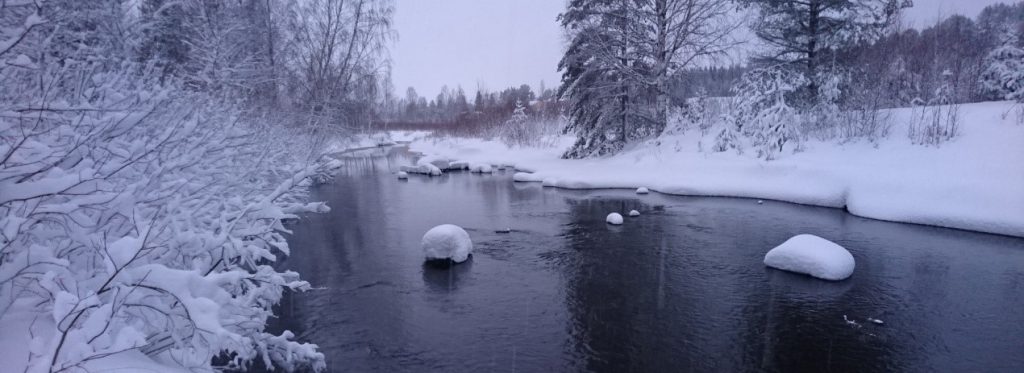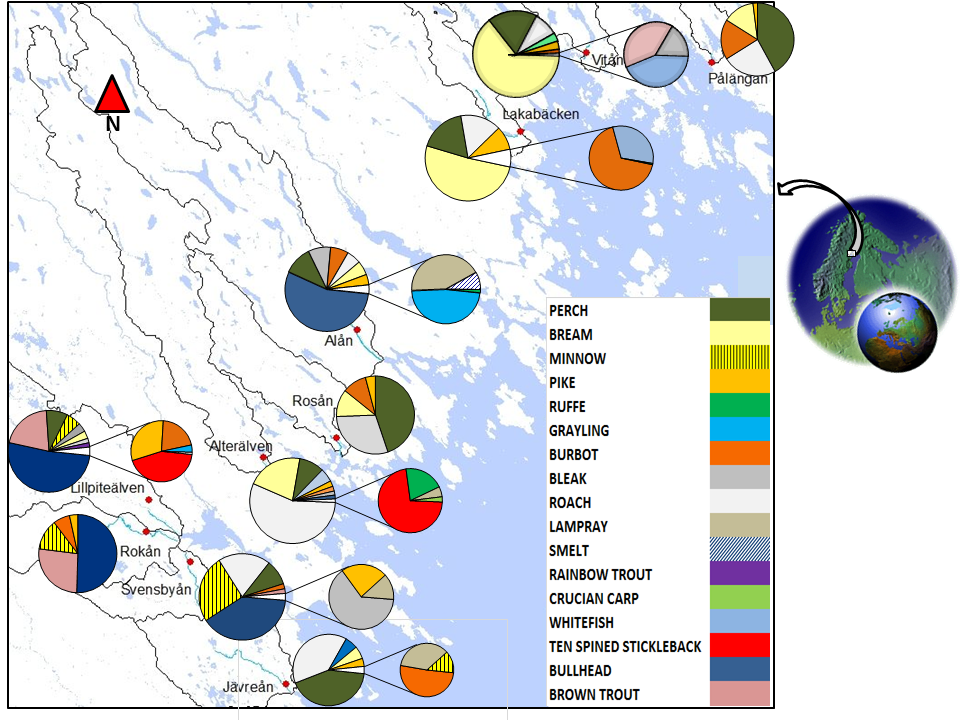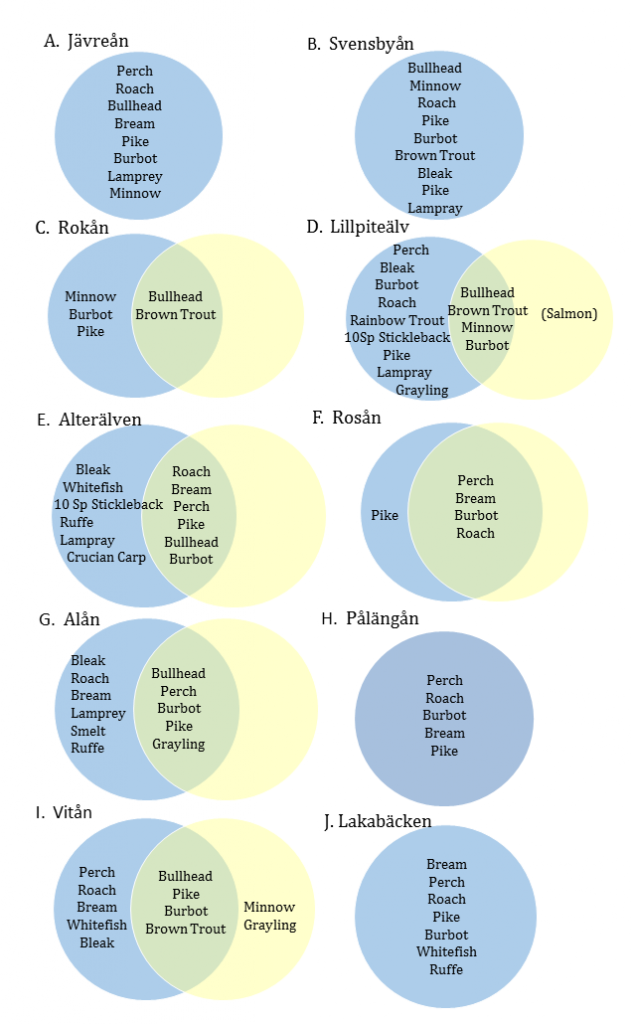In February 2017 AquaBiota monitored fish-communities in ten coastward discharging rivers in northern Sweden, by using eDNA (environmental DNA metabarcoding). From each waterbody a few litres of water was collected and subsequently analysed for traces of fish DNA in order to identify the different species. Historical data from electrofishing spanning over 30 years was compared to one day of eDNA water sampling. The results showed that one day of eDNA sampling detects a higher number of fish species than combined historical data from traditional survey methods. Burbot was detected in every watercourse indicating the spawning period taking place during the winter season.
AquaBiota has monitored the composition of fish species in 10 Swedish coastal-discharging water bodies using aquatic eDNA analyses. The pilot project was initiated by the county administration board of Norrbotten, Northern Sweden. The aim of the survey was to compare eDNA to traditional fishing methods (historical electrofishing data spanning over 30 years) and evaluate eDNA as a tool for environmental monitoring.
The water was collected during one day in February 2017 and was analyzed during the year. The water was collected and processed for DNA analysis using a method which detects species even when concentrations of DNA is small.
Based on eDNA, the ten watercourses held altogether 17 different fish species and 84 separate populations. Historical electrofishing data was missing in four of the locations which were omitted from the methods comparison. eDNA detected all the species and 96% of the populations. Electrofishing detected altogether 15 species and only 47% of the populations. The eDNA sampling coincided with the spawning season of burbot which was detected in all the waterbodies
eDNA-analysis is a good non-destructive tool for monitoring fish communities over large geographic areas during a short time frame. The method is very sensitive for detecting rare-, elusive- and newly arrived invasive- species. The method is especially useful for assessing; biodiversity, effects of human activities and follow-ups of restoration programs. Furthermore the method is useful in evaluating connectivity of fish species encountering natural and anthropogenic barriers.
Link to report (in Swedish)
Hellström, M & Spens, J. 2017: eDNA – Fiskförekomst i 10 kustmynnande vattendrag, Norrbottens län. AquaBiota Report 2017:10. 30 sid.

Rosån; one of the investigated sites.

Fish occurrence within the different locations. Size of pies shows relative biomass of the species (eDNA reads). Small inserted pies show species with lowest biomass.

Venn diagram showing fish species detected by eDNA and historical electrofishing data in 10 rivers, Northern Sweden. Species detected by; 1) only eDNA (blue circle), 2) only elctrofishing (yellow circle) 3) both eDNA and electrofishing (shared area). The species are listed from highest to lowest abundance. Sites A, B, H, I and J lack electrofishing data within 1 km from the eDNA sampling point. Note: Salmon was detected at site D in 1992. Abbreviation; “10 Sp Stickleback” denotes Ten Spined Stickleback.